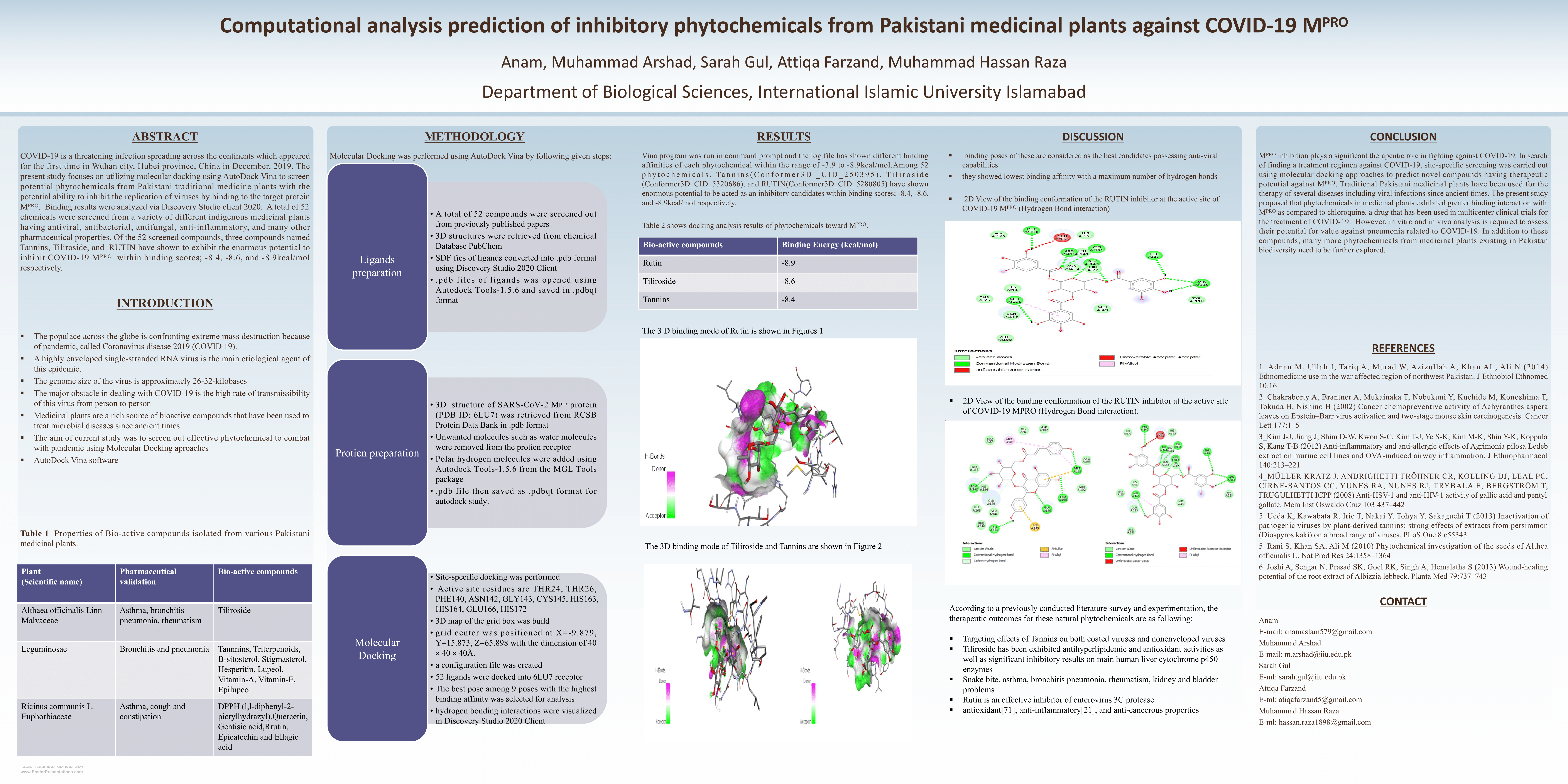Conference 2021 Poster Presentation
Project title
Computational analysis for prediction of inhibitory phytochemicals from Pakistani medicinal plants against COVID-19 MPRO
Authors and Affiliations
Anam1, Muhammad Arshad1, Sarah Gul1, Attiqa Farzand1, Muhammad Hassan Raza1
1. Department of Biological Sciences, International Islamic University Islamabad, Islamabad
Abstract
Background
Coronavirus disease 2019 is a pandemic affecting millions of people across the globe and is caused by a highly enveloped single-stranded RNA virus that belongs to the beta-coronavirus. Currently, no specific treatment is available and researchers are still racing to find out a therapeutic agent. Plant-derived therapeutic approaches have been used for targeting a variety of viral, fungal, and bacterial diseases. Pakistani medicinal plants are a rich source of bioactive compounds that have been used to treat microbial diseases since ancient times. The present study focuses on computational approaches for identifying the lead phytochemicals from traditional medicinal plants via molecular docking.
Methods
Docking was carried out using AutoDock Vina to predict binding interactions between compounds and a protein that controls the activities of replication in the host cell called MPRO. Site-specific docking was performed by determining amino acids in the active site of the receptor. 52 ligands were docked into 6LU7 receptor in a row and then output files in notepad format were generated with 9 poses of binding affinity. The best pose among 9 poses with the highest binding affinity was selected for analysis and hydrogen bonding interactions between ligands and receptors were visualized in Discovery Studio 2020 Client to find out the leading inhibitory compound.
Results
Log file generated using Vina showed different binding affinities of each phytochemical within the range of -3.9 to -8.9kcal/mol. Among 31 phytochemicals, Tannins, Tiliroside, and RUTIN have shown enormous potential to be acted as an inhibitory candidate within binding scores; -8.4, -8.6, and -8.9kcal/mol respectively.
Conclusions
The current findings demonstrate that Pakistani phytochemicals exhibit great binding interaction with MPRO. Among 52 chemicals, 31 phytochemicals displayed > 6kcal/mol binding interactions which may provide helpful insights into exploring and developing natural therapeutic agents against COVID-19 MPRO. However, in vitro and in vivo analysis is required to assess their potential value against pneumonia related to COVID-19. In addition to these compounds, numerous phytochemicals from medicinal plants existing in Pakistan biodiversity can be further explored.

